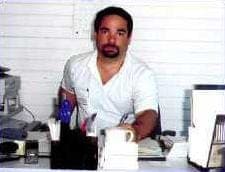
Curated with aloha by
Ted Mooney, P.E. RET

The authoritative public forum
for Metal Finishing 1989-2025

-----
Silver Migration Inhibitor
2000
Our company makes small beryllium oxide chip resistors with silver electrodes (applied as a silver paste then fired to fuse them to the BeO). We've encountered a problem with silver migration/dendrite growth causing short circuits. Silver was chosen for solderability and low cost. Materials such as platinum-gold would solve the problem, but at a significant cost increase. A lower cost solution might be to apply a barrier coat of nickel over the silver to prevent the migration then apply a solder plate for solderability. Does this sound reasonable? If so, what would be a good nickel thickness? Any recommendations or comments would be much appreciated.
Thank you.
George
George Flanagan- Smithtown, New York
It is possible to nickel plate BeO directly without silver paste and firing. For soldering purpose, you need only a couple of micron layer depending on the type of solder. Call us if you need help.
Mandar Sunthankar- Fort Collins, Colorado
2000
Hey George,
The whisker, migration growth of some metal is thought to be stress related. The cure in most cases is to alloy the metal with a metal that stops the whisker growth. The right metal alloyed with the silver in the paste should be the ticket. Check with your supplier.
Regards,
Fred Mueller, CEF- Royersford, Pennsylvania
2000
Hi, George! YES, the method of applying Ni as a barrier coat is usual on Ag electrodes on ceramics. Just see the data books of various SMD (surface mount devices) companies in the electronic parts buiz. They usually add a third layer of Sn for best solderability...
Lois KleeweinGraz. Univ. of Tech'y - Graz, Austria
2000
You may be able to get away with 10 millionths or it may take 50 millionths. As a barrier between Al and Tin we use 50 and it works fine. For Au over Cu or Brass we've used 10 with good success.

Jim Conner
Anoplex Software
Mabank, Texas USA

2000
Q, A, or Comment on THIS thread -or- Start a NEW Thread